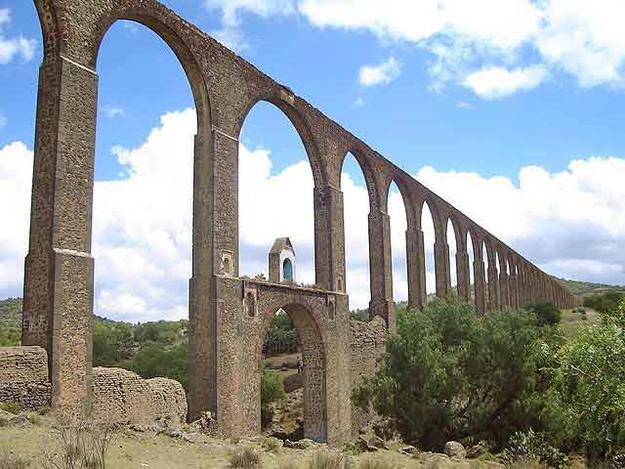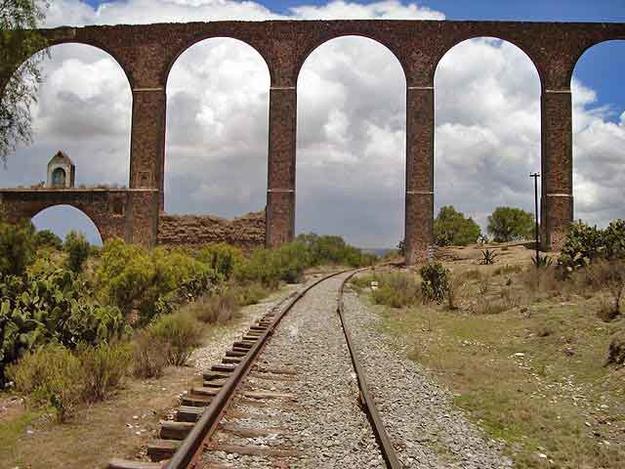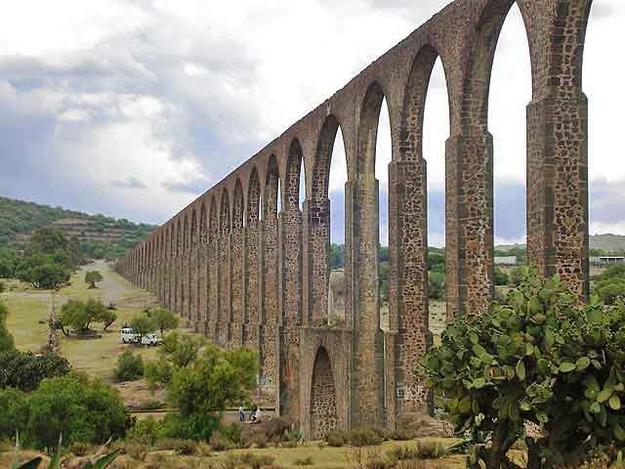Acueducto de Tembleque
2010 World Monuments Watch
From the rocky, desolate terrain of the central Mexican state of Hidalgo, the Acueducto de Tembleque reaches toward the sky and rises up to 125 feet (39 meters) in height. The aqueduct, built between 1543 and 1560, was designed by Brother Francisco de Tembleque with the assistance of the master stonecutter Juan Correa de Agüero and hundreds of indigenous workers. The structure towers over the surrounding landscape and spans farmland, ravines, towns, cities, and an archaeological site, connecting Tecajete Hill in Zempoala to Otumba using a complex system of tanks, water coffers, and water troughs. Tembleque is built of both local and volcanic stone, upon which a 1-foot-wide (30 centimeters) channel of smooth, polished stone transports the water. Acueducto de Tembleque is widely considered the most significant work of hydraulic engineering built in Mexico during the 16th century. Further, it remains an important symbol to the communities of the region whose ancestors depended on the aqueduct’s water. Even today, conservation efforts to repair the aqueduct are focused not only on addressing deterioration caused by natural exposure and vandalism, but on restoring the hydraulic complex so that water can once again run and serve the local communities.
Since the Watch
Since Watch Listing, the Ministry of Culture of Mexico (CONACULTA) and the FOREMOBA government program have committed $290,000 for the development of a conservation master plan for the entire aqueduct and restoration of 1,000 meter portion at Barranca de Tepeyahualco. July 2010



